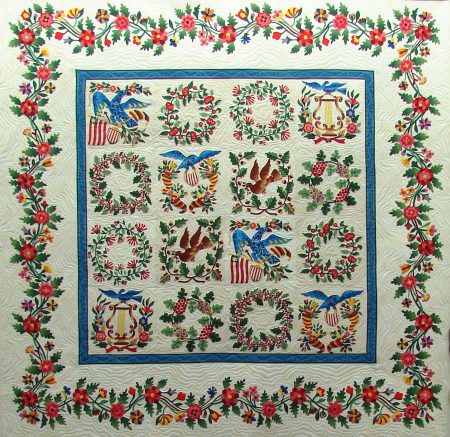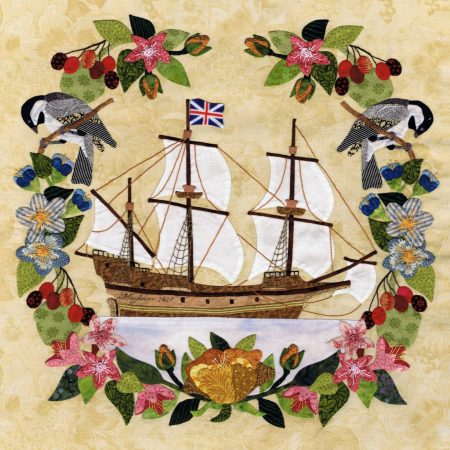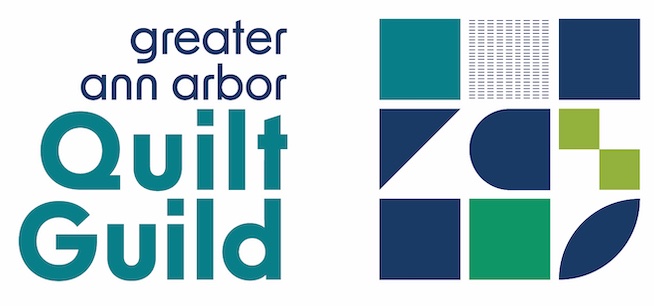 By Pamela Setla, GAAQG Preservationist, Dec 5, 2019
By Pamela Setla, GAAQG Preservationist, Dec 5, 2019
Imagine a quilt being auctioned by Sotheby’s for $176,000 or one sold by Northeast Auctions for $58,000. These were actual prices paid for a Baltimore Album Quilt, a quilt made during the 1840s.
What make these quilts so attractive to both art lovers and quilters? It is the workmanship. Women living in Baltimore and nearby counties during the 1840s-1850s designed and quilted three-dimensional works of art. Most of these women remain anonymous, however, one name has come down through the years – Mary Simon – and her work is impeccable.
These masterpieces offer three-dimensional designs of floral wreaths, vases, woven baskets, birds, paper-cut designs, buildings like the Baltimore Hospital or a town hall, and even events of the time. They are a glimpse into an earlier America.
These amazing women would use green and red fabric with touches of pink, gold, brown, yellow and bright blue to form these pictures. The designs were then either appliquéd onto the base fabric, or the quilter would use reverse appliqué, where the top layer design is cut away to reveal the bottom fabric’s color. The quilts are also set apart by their colorful swag borders, providing a visually appealing wrap-around. Unlike traditional quilts, the intricate appliqué blocks are more important than the quilting
A new book, Hidden Treasures: Quilts from 1600 to 1860, by Lori Lee Triplett and Kay Triplett, has a chapter on Baltimore Album Quilts from the Poos Collection. Many of these quilts have rarely been displayed, and the superb photos give readers a close-up of the appliquéd scenes.
 According to the Tripletts, new online research divides album quilts into three timelines.
According to the Tripletts, new online research divides album quilts into three timelines.
- The first, called Designer I, refers to a high style popular quilt from 1845-1849 – the traditional Baltimore Album Quilt.
- Designer II refers to a simpler style with fewer pictorials. These traditional album quilts, from the mid-1840s-60s, would have blocks that were usually signed by congregants of a Methodist or German Reform Church. The quilts were then presented to a pastor as a farewell gift. Catholic and Jewish women also made album quilts in various styles.
- Designer III quilts feature a small-scale, distinct style based on German folk art.
For those willing to tackle the intricate appliqué, the Baltimore Applique Society, located in Maryland, offers patterns that were copied from the original quilts seen in various museums. There are also a number of books that feature less complicated Baltimore Album blocks for those willing to try their hand at appliqué.
To see more of these works of art, visit the Winterthur Museum, the Baltimore Museum of Art and the Daughters of the American Revolution organization.

